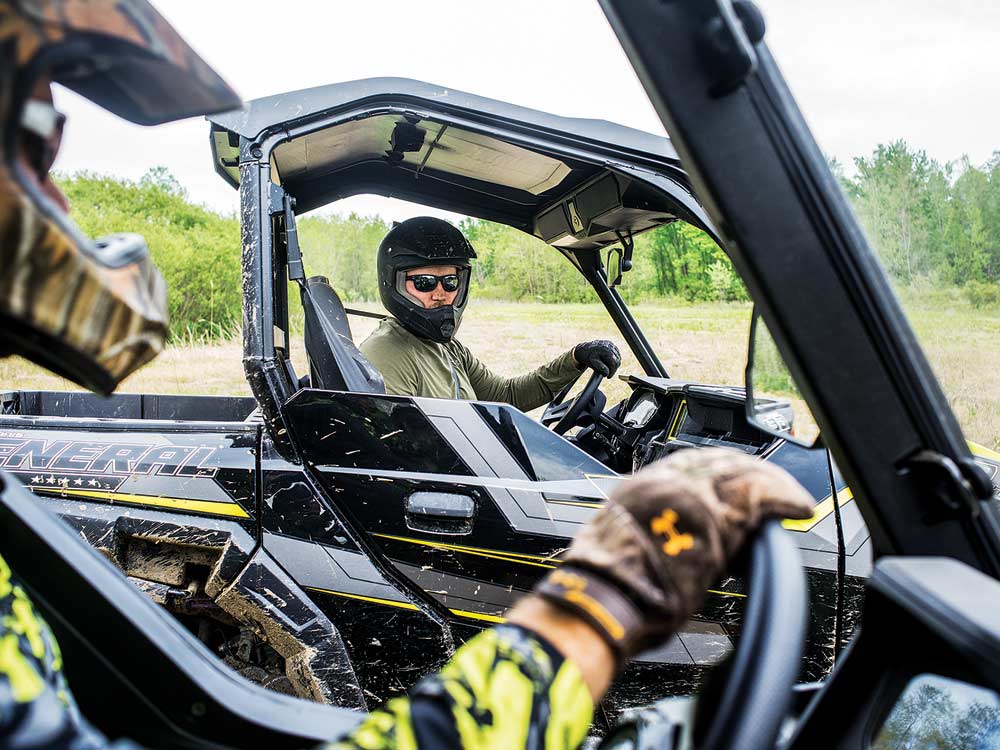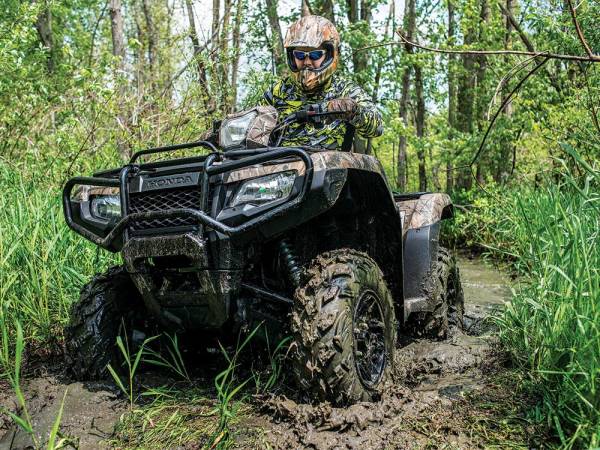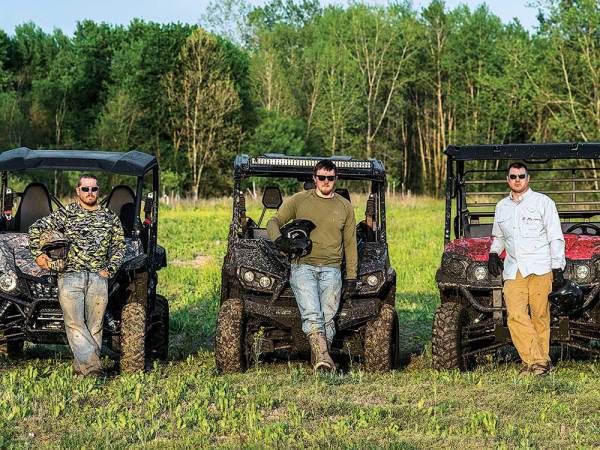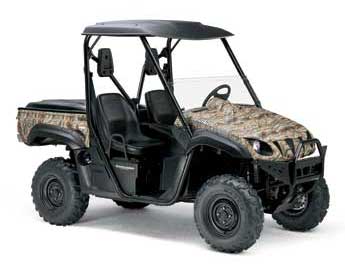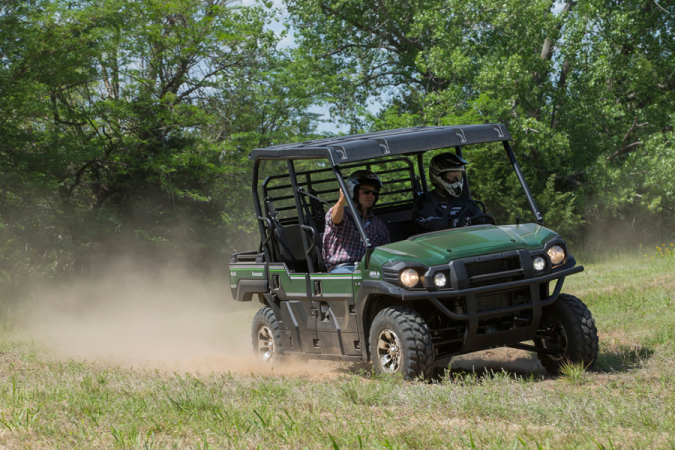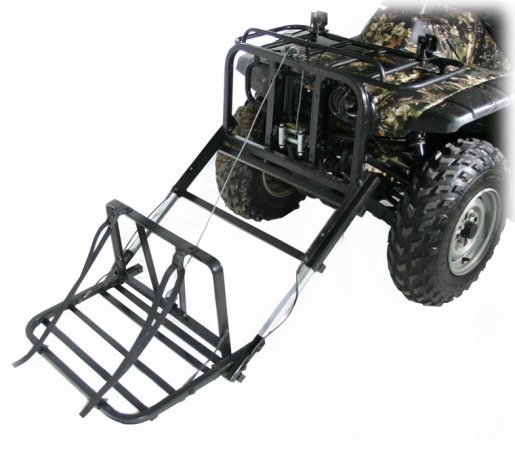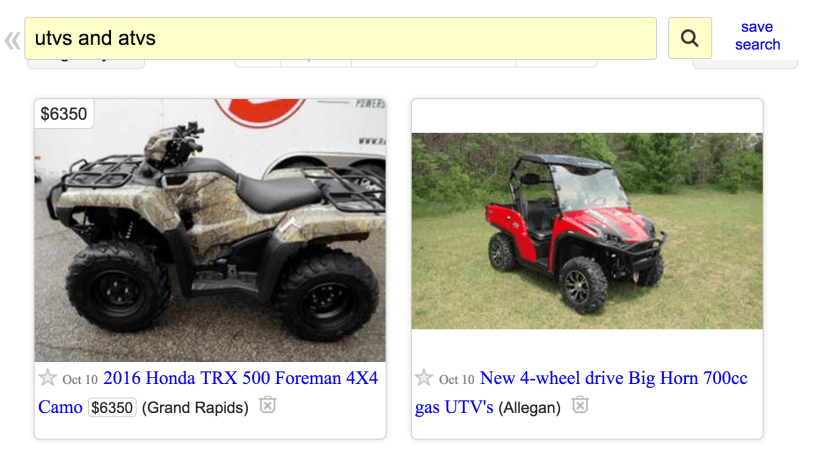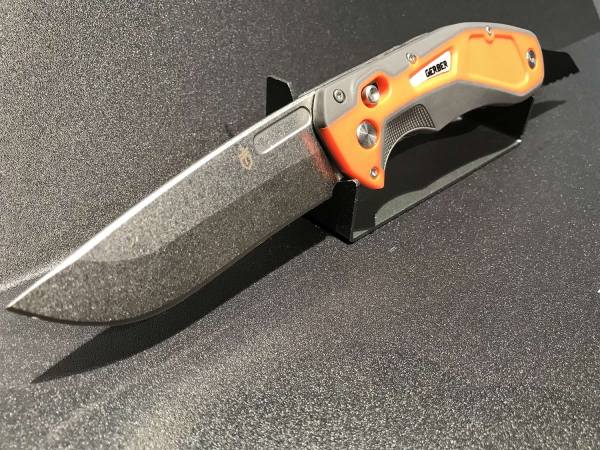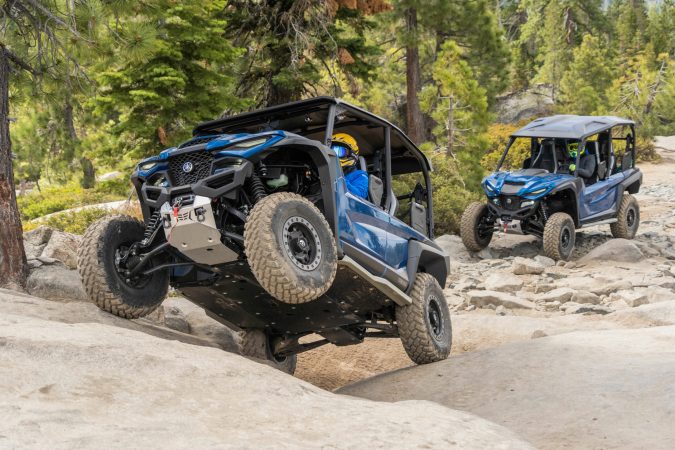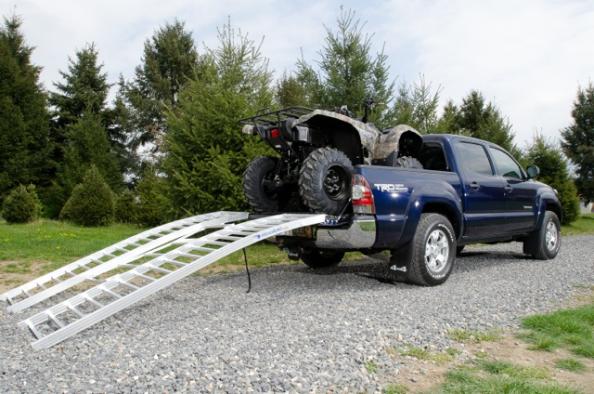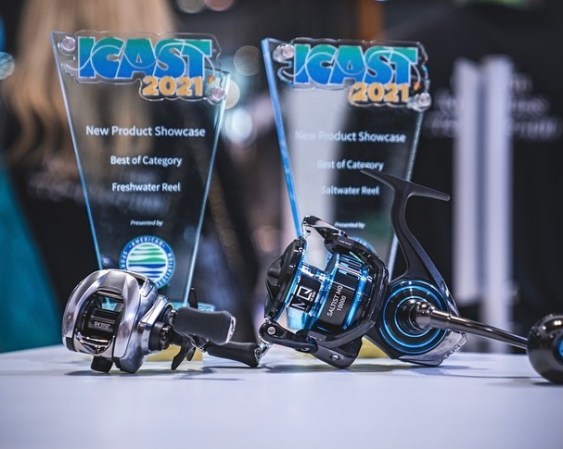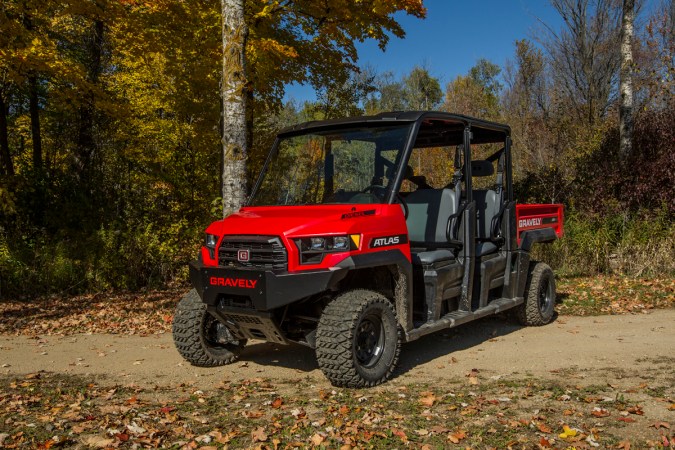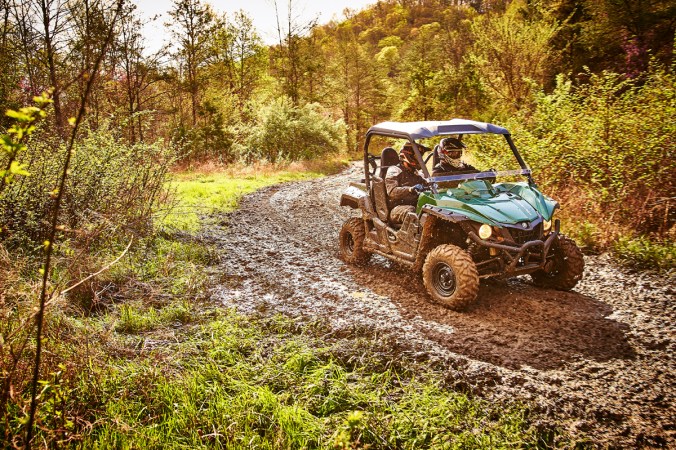We may earn revenue from the products available on this page and participate in affiliate programs. Learn More ›
There are few pieces of outdoor gear that cost as much—or are intended to be kept in service for as long—as ATVs and UTVs.
The world of utility vehicles is far larger than it once was, and this year’s ATV and UTV test was a testament to the breadth and depth of the field.
Our mission was simple: Find the units that are the best fit for those who work and play in the outdoors.
We evaluated tech-laden units that boasted features and gadgets not dissimilar to those found in high-end cars and trucks (with price tags to match), and we checked out basic work-focused utility vehicles that made up in value and function what they lacked in bells and whistles.
All told, we put a field of 18 new ATVs and UTVs to work in southern Michigan’s farm belt and discovered a crop of machines more capable, more refined, easier to use, and, yes, more fun than what was available just a few years ago.
UTVs 600cc and Above | UTVs 600cc and Below | ATV Test | How We Test
UTVs 600cc and Above
Editor’s Choice: Honda Pioneer 1000-5 LE | Score: 93.0
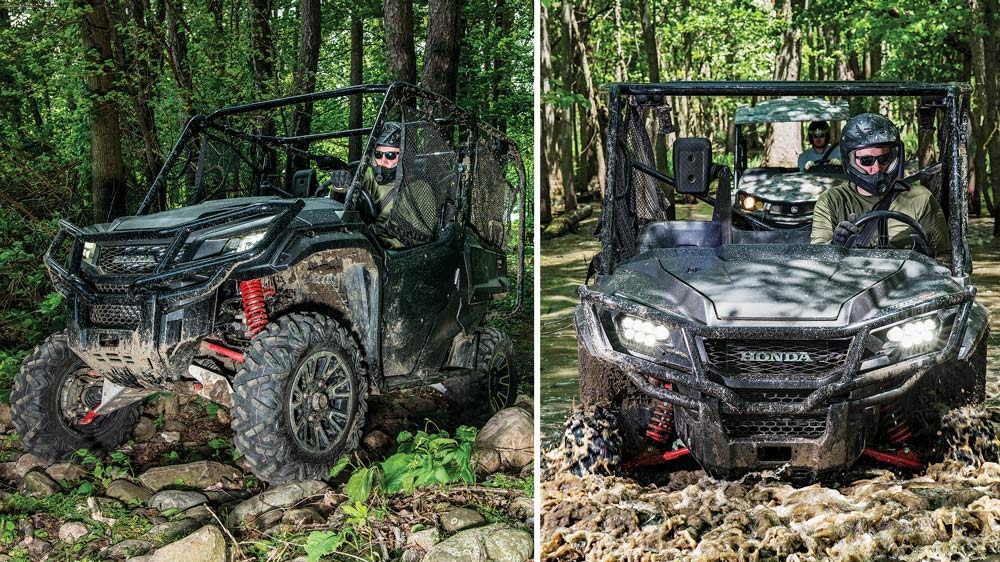
| The Results | |
|---|---|
| Handling | 9.7 |
| Build Quality | 9.3 |
| Versatility/Utility | 9.7 |
| Noise Level | 10.0 |
| Ground Clearanace | 10.0 |
| Serviceability | 8.3 |
| Top Speed Score | 8.7 |
| Ride | 9.7 |
| Value | 8.3 |
| Ease of Use | 9.3 |
| TOTAL | 93.0 |
Top Speed (MPH): 69
MSRP As Tested: $21,599
“Wow.” That was the first word spoken by every member of our test crew after completing his first lap around the course in the Pioneer 1000-5 LE, this year’s Editor’s Choice. From the butter-smooth ride to the truck-style, six-speed transmission to the almost unbelievable absence of engine noise and vibration, the Pioneer 1000-5 impressed in every category. And then we took a look at the cargo area….
The 1000-5 LE features a fully functional (and spacious) dumping cargo box. But it’s more than that. Pull a lever to open a rear access door, flip up two panels, and that cargo box converts into a second row of seating, allowing the two-seater to handle up to five passengers.
Ground clearance was the best in the test at nearly 13 inches, as was towing capacity at 2,000 pounds, thanks to its 999cc twin-cam, liquid-cooled engine. But you’d be hard-pressed to believe the Pioneer’s engine is capable of so much power when you’re riding in it—primarily because it sounds as if there is no engine at all. Because engine noise registers only 76 decibels in the cab at 20 mph, you hear the tires on the trail rather than the buzz of an engine.
Polaris General 1000 EPS
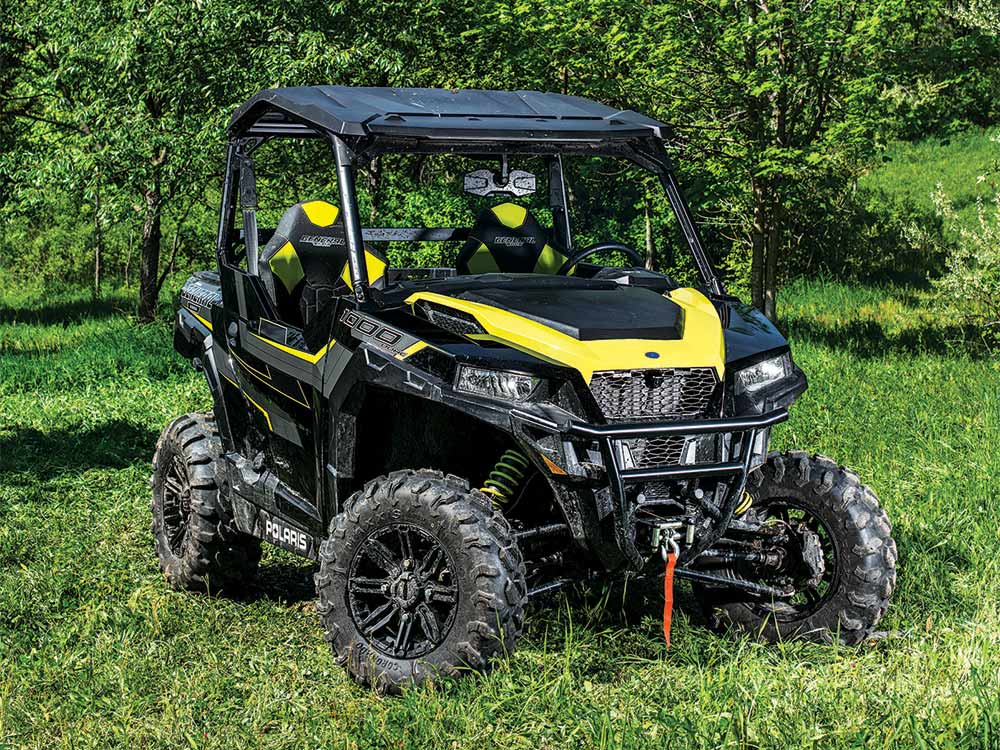
| The Results | |
|---|---|
| Handling | 9.3 |
| Build Quality | 9.7 |
| Versatility/Utility | 8.0 |
| Noise Level | 5.7 |
| Ground Clearanace | 91 |
| Serviceability | 8.0 |
| Top Speed Score | 10.0 |
| Ride | 9.7 |
| Value | 7.7 |
| Ease of Use | 9.7 |
| TOTAL | 86.9 |
Top Speed (MPH): 73
MSRP As Tested: $21,499
If our test focused solely on fun, the General would have been a runaway winner. Cranking out 100 horses, the General ripped on straight runs, threw mud in spectacular fashion, and exceeded 70 mph on the top end. The seats were excellent, and the touch-screen Ride Command system wowed with its GPS capability, recordable camera systems, and Bluetooth connectivity. But, in the end, we wanted a bit more utility and application than just raw power and muddy bliss. And you’ll pay for that fun-first design: Our test unit carries a hefty MSRP of $21,499.
Textron Stampede EPS
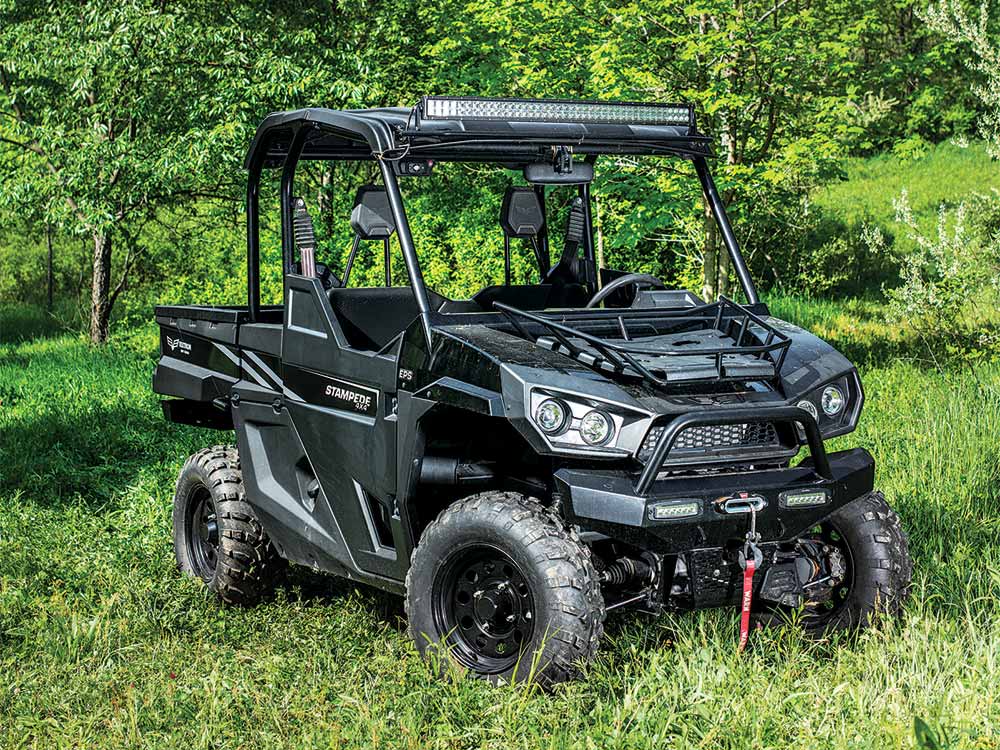
| The Results | |
|---|---|
| Handling | 9.3 |
| Build Quality | 8.7 |
| Versatility/Utility | 7.3 |
| Noise Level | 5.6 |
| Ground Clearanace | 9.1 |
| Serviceability | 8.3 |
| Top Speed Score | 9.4 |
| Ride | 9 |
| Value | 9.0 |
| Ease of Use | 8.7 |
| TOTAL | 84.4 |
Top Speed (MPH): 64
MSRP As Tested: $14,799
Textron Off Road is a new name forged from an “old” brand—Bad Boy Buggies. The company’s first foray into the gas-powered utility vehicle realm is a good one. It boasts a beefy 80 hp (846cc) engine, with an innovative dry sump oil system to keep oil temps lower than do conventional systems. A unique extended cab configuration provides storage behind the seats separate from the cargo bed, creating an ideal location for transporting guns, bows, and anything else you don’t want bouncing around. One fault: It’s loud. But at $14,799, it’s a heck of a value.
Can-Am Defender HD10
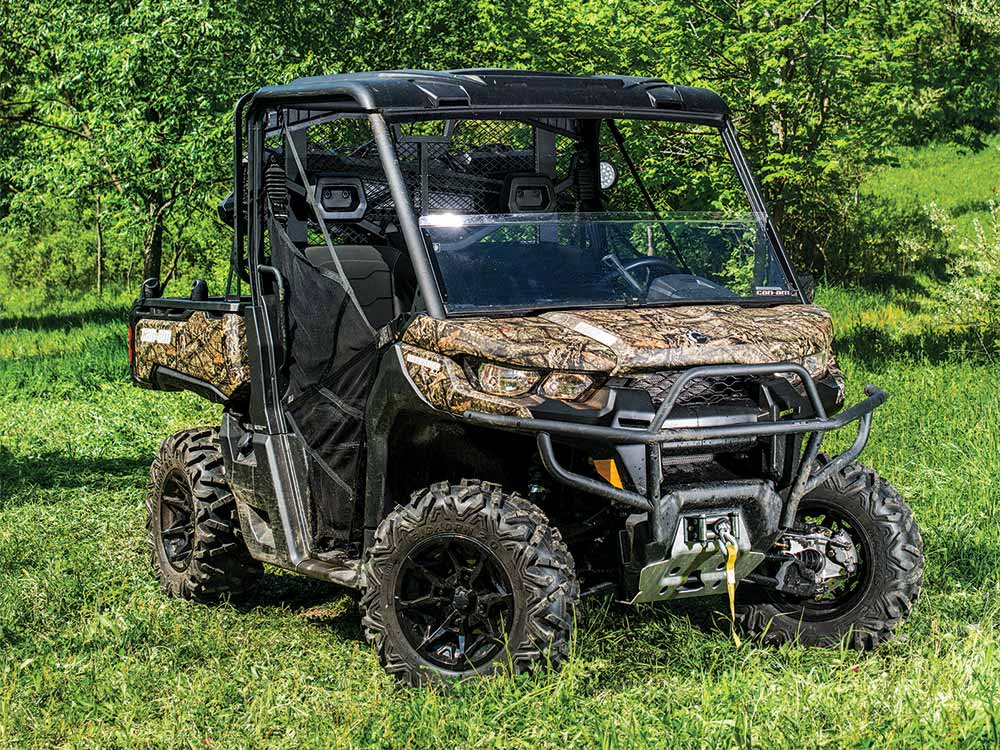
| The Results | |
|---|---|
| Handling | 98.0 |
| Build Quality | 9.0 |
| Versatility/Utility | 8.3 |
| Noise Level | 6.5 |
| Ground Clearanace | 7.9 |
| Serviceability | 8.3 |
| Top Speed Score | 9.0 |
| Ride | 8.3 |
| Value | 7.7 |
| Ease of Use | 9.0 |
| TOTAL | 82.0 |
Top Speed (MPH): 66
MSRP As Tested: $19,699
Can-Am’s Defender HD10 proved to be one of the tougher machines to evaluate. There were plenty of hits: thoughtful storage placement, adjustable seats, and a massive cargo box. And some misses: It was louder than expected, the handling was a bit sloppy, and the price is steep.
To be fair, our test unit was the special Mossy Oak edition, which adds all manner of upgrades—and a hefty price tag of nearly $20,000. Strip away the extras, however, and you’re left with a capable unit at a more palatable price of about $14,000.
Kawasaki Mule Pro-FX EPS LE
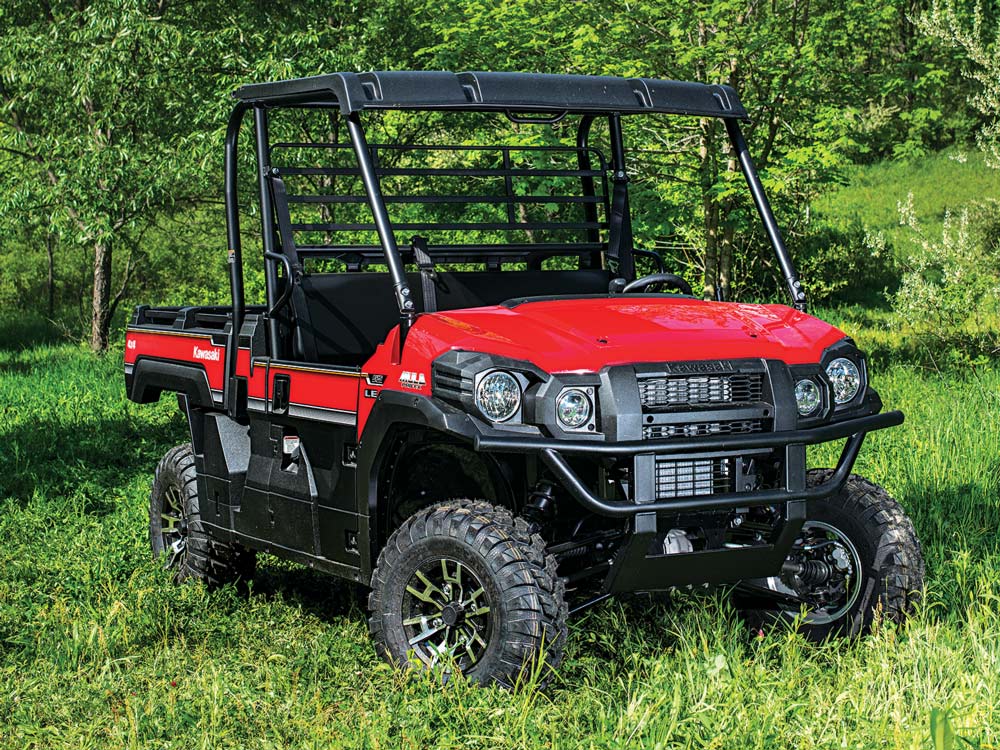
| The Results | |
|---|---|
| Handling | 7.3 |
| Build Quality | 8.3 |
| Versatility/Utility | 7.3 |
| Noise Level | 8.1 |
| Ground Clearanace | 7.1 |
| Serviceability | 8.3 |
| Top Speed Score | 6 |
| Ride | 8.3 |
| Value | 8.0 |
| Ease of Use | 8.3 |
| TOTAL | 77.0 |
Top Speed (MPH): 46
MSRP As Tested: $16,299
The Pro-FX EPS LE is Kawasaki’s biggest, baddest Mule yet—with “big” being the key word here. Measuring nearly 12 feet long and standing almost 7 feet tall, this machine is massive. In open terrain, it is a workhorse. But in tight quarters, its size was a hindrance.
Its 3-cylinder, 812cc engine produces 48 ft.-lb. of torque at 3,500 rpm, and does so in whisper-like fashion. With noise levels of just 74.2 decibels in the cab and 89.5 decibels while cruising at 20 mph, the unit was one of the quietest machines we tested.
We liked its smooth ride, but its immense bulk hurt handling.
Yamaha Wolverine R-Spec EPS | Score: 77.5
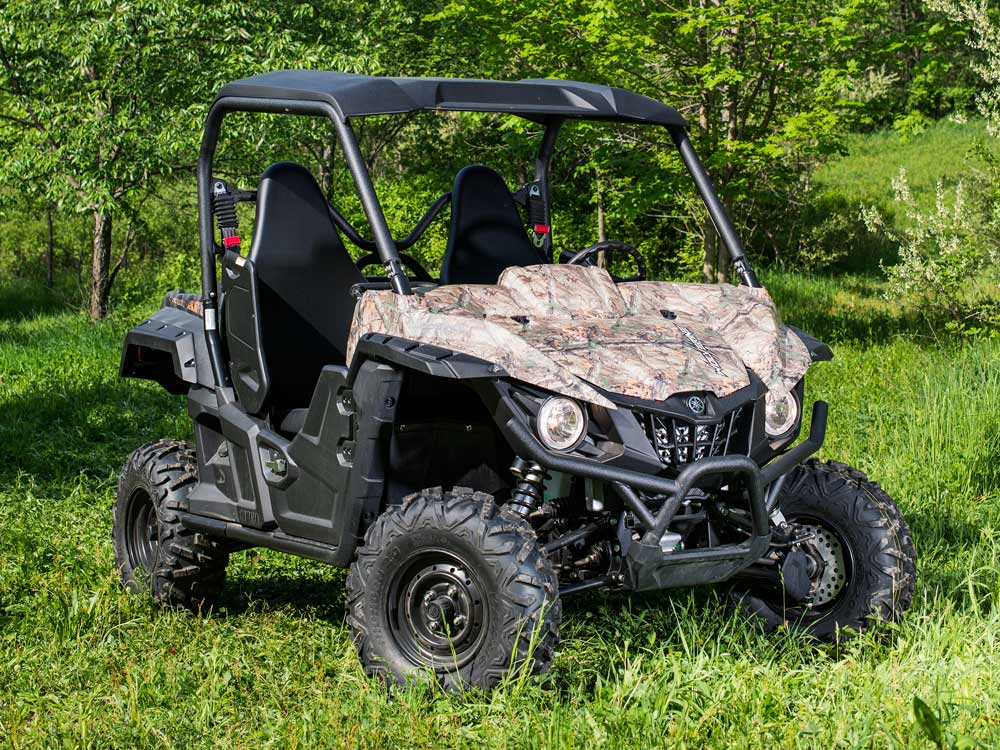
| The Results | |
|---|---|
| Handling | 8.3 |
| Build Quality | 8.3 |
| Versatility/Utility | 6.7 |
| Noise Level | 6.6 |
| Ground Clearanace | 8.2 |
| Serviceability | 8.3 |
| Top Speed Score | 7.5 |
| Ride | 8.0 |
| Value | 7.3 |
| Ease of Use | 8.3 |
| TOTAL | 77.5 |
Top Speed (MPH): 56
MSRP As Tested: $13,799
Yamaha’s Wolverine was best described by the test panel as a “tweener.” It’s not quite a pure sport machine, but it’s not really a dedicated utility vehicle either. Powered by a 708cc dual-overhead cam engine, the R-SPEC EPS was snappy and the test team gave it solid marks for handling and overall ride. The machine features an adjustable KYB suspension system with 9.7 inches of adjustment up front, and more than 10 inches on the back, along with several compression damping, preload, and rebound settings. But its lack of utility—including the nearly unforgiveable gaffe of an undersized cargo box that doesn’t dump—cost it points.
On the positive side, with an MSRP of $13,199 (our camo test model had an MSRP of $13,799), the Wolverine R-SPEC includes a roof and rigid doors, which are optional accessories on competing units. Under-seat storage was a useful addition.
The power steering system was responsive, and the unit handled the bumps and ruts of our test course with ease. The unit’s four-wheel-drive system engaged with a simple-to-use dial, though testers did note some lag in locking the differential into full 4WD.
Cub Cadet Challenger 750 | Score: 63.8
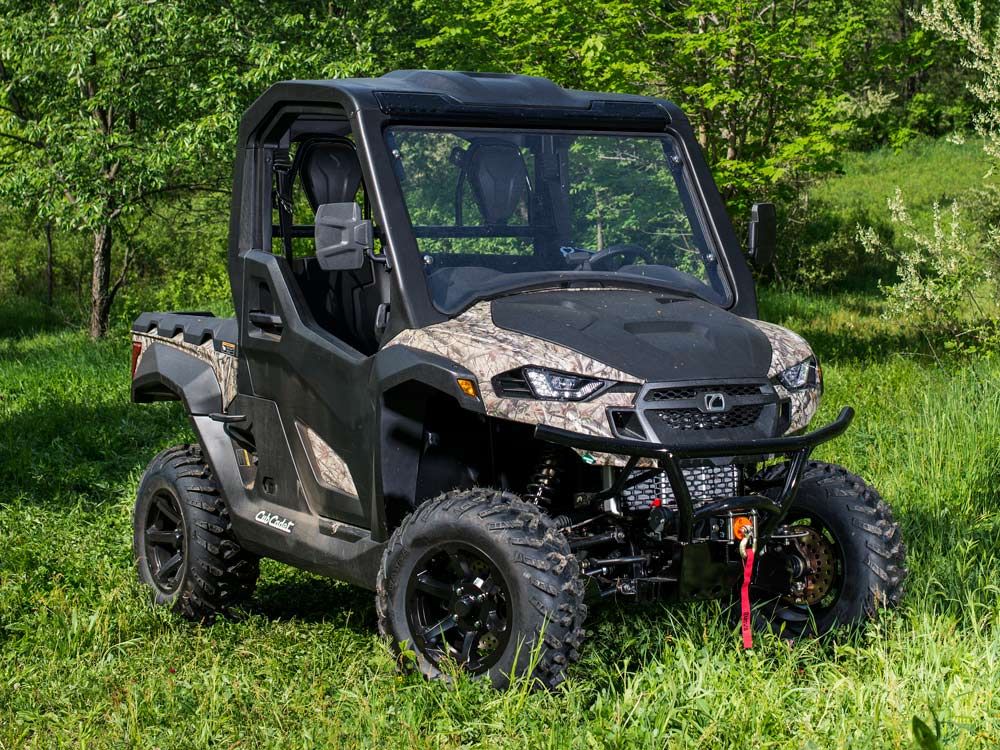
| The Results | |
|---|---|
| Handling | 6.0 |
| Build Quality | 6.0 |
| Versatility/Utility | 7.3 |
| Noise Level | 5.0 |
| Ground Clearanace | 9.4 |
| Serviceability | 7.3 |
| Top Speed Score | 6.2 |
| Ride | 3.3 |
| Value | 5.3 |
| Ease of Use | 8.0 |
| TOTAL | 63.8 |
Top Speed (MPH): 47
MSRP As Tested: $10,999
The Challenger 750 boasts the most complete accessory package of any unit we tested. From side view mirrors and blinkers to a roof and full, rigid doors, the Challenger includes just about every option you can think of—and that all comes standard.
Unfortunately, it also includes less desirable features: vibration and noise. With in-cab readings topping 98 decibels at 10 mph, the Challenger was easily the loudest machine we reviewed. It made normal-level conversations impossible. The vibrations rumbling through the seats only served to make the machine more distracting. The Challenger 750’s rack and pinion steering system wasn’t a tester favorite either, and it proved a bit of a rough rider. Tweaking the adjustable suspension system, however, could help alleviate that issue. (We tested all units as received from the manufacturer.)
The standard winch was a welcome bonus—and came in handy when we got a bit too deep in the mud. The test team did give the unit solid marks for its overall utility, citing its roomy cargo box and a simple control layout that was easy to master.
With an MSRP of $11,299, the Challenger 750 offers a lot of bang for the buck. If Cub Cadet can refine the ride and tame the vibration and noise, a future model at this price point could become a serious Great Buy contender.
UTVs 600cc and Below
John Deere Gator XUV5901
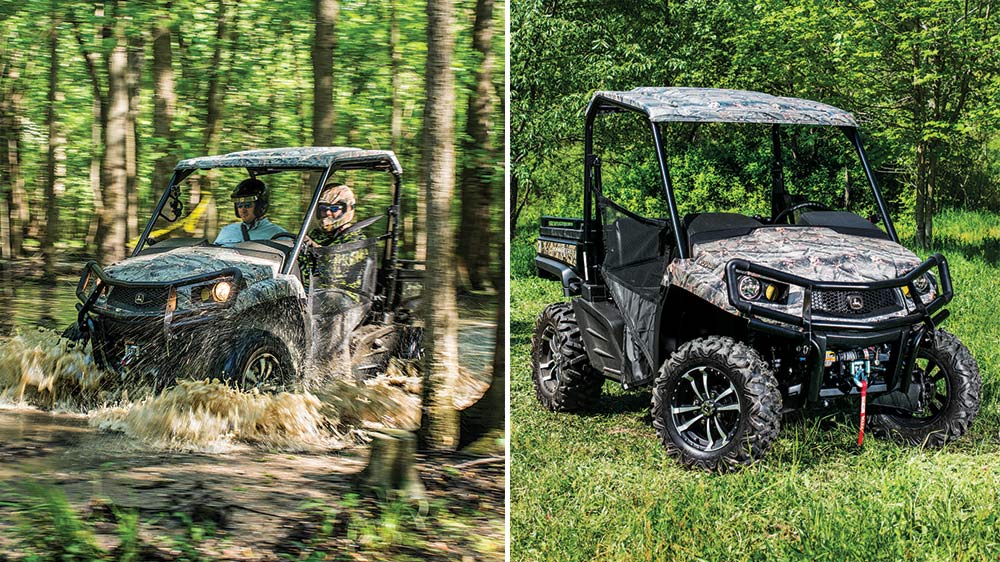
| The Results | |
|---|---|
| Handling | 9.3 |
| Build Quality | 8.7 |
| Versatility/Utility | 8.3 |
| Noise Level | 7.8 |
| Ground Clearanace | 7.6 |
| Serviceability | 9.0 |
| Top Speed Score | 6.5 |
| Ride | 9.0 |
| Value | 8.3 |
| Ease of Use | 9.3 |
| TOTAL | 82.8 |
Top Speed (MPH): 49
MSRP As Tested: $12,199
The XUV Series is Deere’s attempt at adding a bit more style and in-field functionality to the long-standing Gator line. Based on its performance in our test, the approach was a successful one.
The 590i’s engine packed plenty of power in a small(ish) package, and the overall ride and handling, thanks to the power steering, were best in class. The four-wheel-drive system was effective and quick to deploy.
The rig had little trouble weaving through trees and in-field obstacles, and its adjustable suspension was excellent. One knock on Gators of the past was how loud they were. The 590i wasn’t the quietest vehicle in its class, but it was far from the loudest—a marked improvement over previous models.
The machine’s build quality was superb and includes a number of smart but subtle touches, like 20 tie-down points, sealed under-hood storage, and easy-access service points. There’s also one less-subtle benefit: markedly more in-cab legroom than on competing models.
Our test model included an optional winch and upgraded wheels and tires—both useful additions.
Great Buy: Polaris Ranger 500 | Score: 81.7
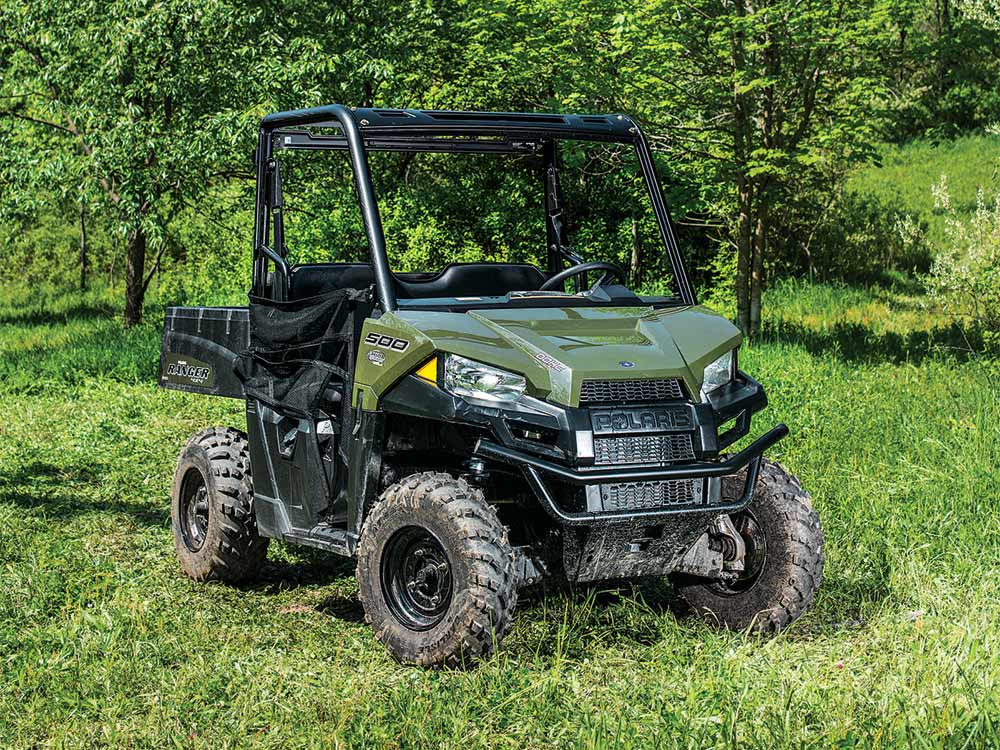
| The Results | |
|---|---|
| Handling | 8.0 |
| Build Quality | 9.0 |
| Versatility/Utility | 8.3 |
| Noise Level | 9.3 |
| Ground Clearanace | 6.8 |
| Serviceability | 8.3 |
| Top Speed Score | 6.0 |
| Ride | 8.0 |
| Value | 9.0 |
| Ease of Use | 9.0 |
| TOTAL | 81.7 |
Top Speed (MPH): 46
MSRP As Tested: $8,999
The Polaris Ranger 500 was the fullback of this year’s test. If you’ve got work to do and don’t want to bust your budget, this is your machine. The rig earned high marks for its overall quality of build, with a stout, strong frame and a 500cc ProStar engine that produces 32 hp. The AWD system allowed for switching from 2WD to 4WD with the push of a button; it can operate in 2WD with a differential lock or without, allowing for sharper turns and less turf damage when you’re driving it on lawns (or food plots). The dumping cargo box had plenty of room, and the gas assist made dumping heavy loads a bit easier.
Our test model lacked power steering, and that omission cost it a few points in the handling category, and the absence of engine braking was bothersome. Its 9.75 inches of ground clearance was a bit less than that of others tested, while its top speed of 46 mph was on par with the rest of the field.
This no-frills work machine featured adequate storage. With Polaris’ reputation for durability and an MSRP of $8,999, it was an obvious choice for the Great Buy award.
Can-Am Defender HD5 | Score: 78.5
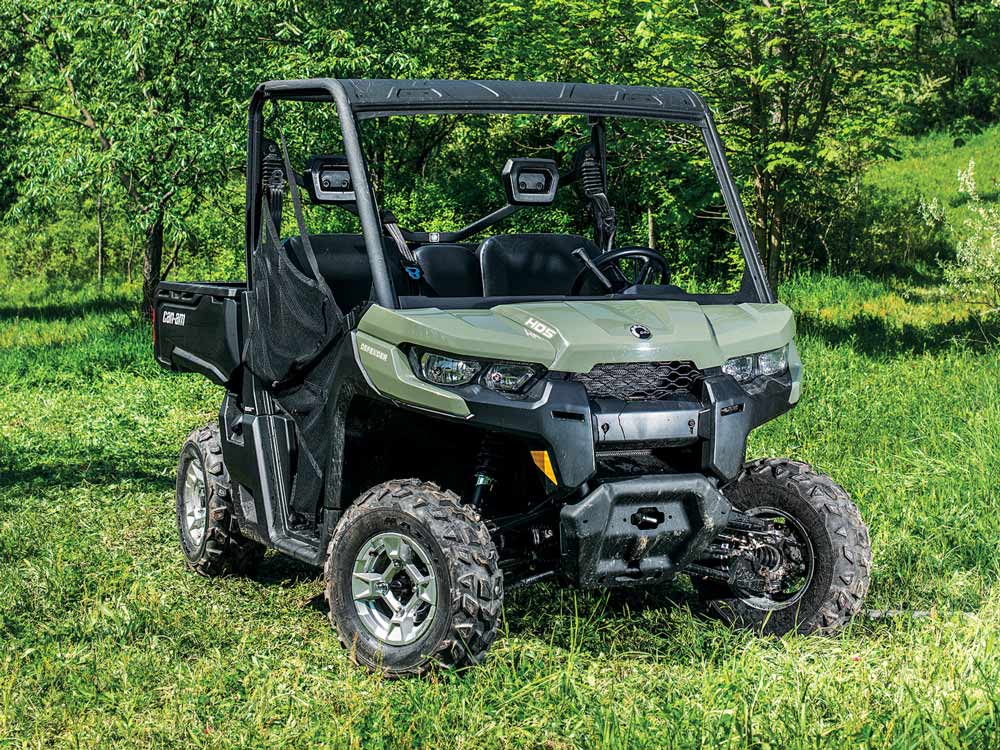
| The Results | |
|---|---|
| Handling | 7.7 |
| Build Quality | 8.3 |
| Versatility/Utility | 8.7 |
| Noise Level | 7.0 |
| Ground Clearanace | 7.6 |
| Serviceability | 8.7 |
| Top Speed Score | 5.9 |
| Ride | 8.3 |
| Value | 8.0 |
| Ease of Use | 8.3 |
| TOTAL | 78.5 |
Top Speed (MPH): 45
MSRP As Tested: $9,999
Sharing the same body size and frame as the rest of the Defender lineup, the HD5 had the smallest engine of the group. With a 38 hp (427cc) single-cylinder engine, the HD5 can tow up to 1,500 pounds and has a payload capacity of 1,200 pounds. Like the HD10, the HD5 has a truck-style tailgate and plenty of convenient storage locations. And, of course, the same fantastically large cargo box.
The test panel found the machine to be slightly underpowered compared to others in the category but they noted that it’s substantially bigger and heavier than its competitors as well.
Honda Pioneer 500 | Score: 64.2
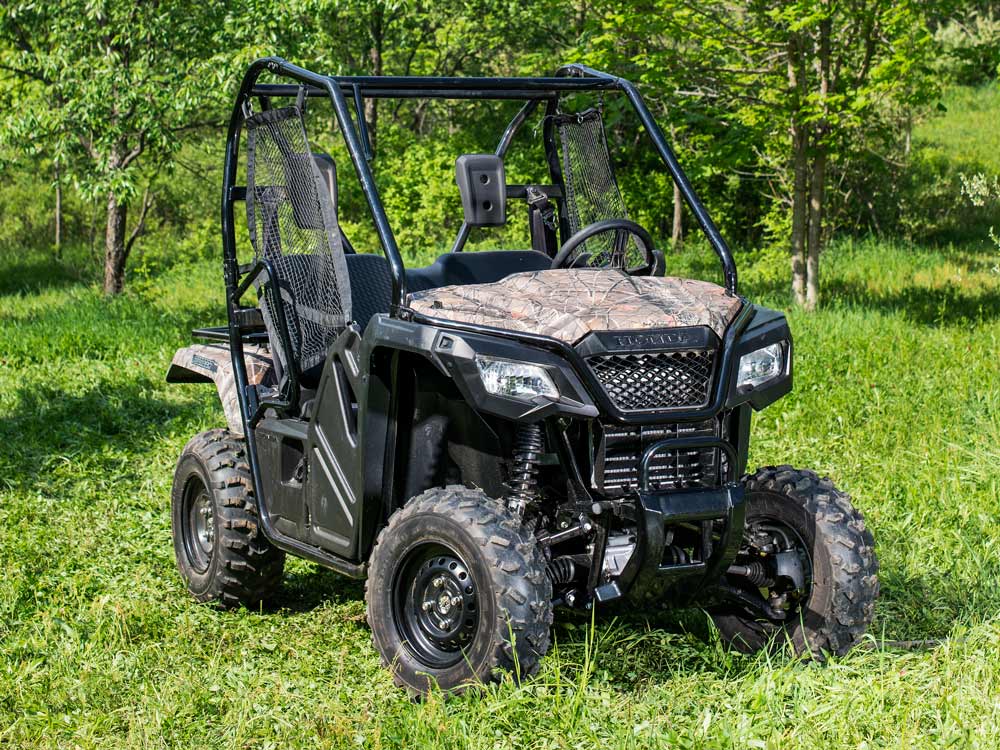
| The Results | |
|---|---|
| Handling | 6.7 |
| Build Quality | 7.7 |
| Versatility/Utility | 4.3 |
| Noise Level | 8.6 |
| Ground Clearanace | 5.0 |
| Serviceability | 8.3 |
| Top Speed Score | 5.0 |
| Ride | 6.3 |
| Value | 5.0 |
| Ease of Use | 7.3 |
| TOTAL | 64.2 |
Top Speed (MPH): 39
MSRP As Tested: $9,599
The Pioneer 500 shares a name with the exceptional Pioneer 1000-5 that took an Editor’s Choice award in this test. But these two machines are similar in name only. While we found the truck-style transmission in the 1000-5 to be fantastic, that was not the case with the Pioneer 500. Shifting was abrupt, almost alarming, and the shift points didn’t seem quite right. We found ourselves reverting to the unit’s manual paddle-shift system (which is cool) and avoiding the automatic transmission altogether.
The lack of a cargo box cost the Pioneer 500 versatility/utility points and caused testers to wonder whether the machine was truly a UTV or a side-by-side ATV.
It was the only vehicle to get stuck in the mud on the first day of testing (before the course had seriously degraded), and the need to pull a somewhat hidden lever to shift into reverse cost it points in the ease-of-use category. The machine did earn solid scores for its overall build quality, and its smaller stature compared to other models in the category did make it a breeze to maneuver.
With an MSRP of $9,599 ($8,999 without camo), the Pioneer 500 lacked the utility and versatility to garner top value scores.
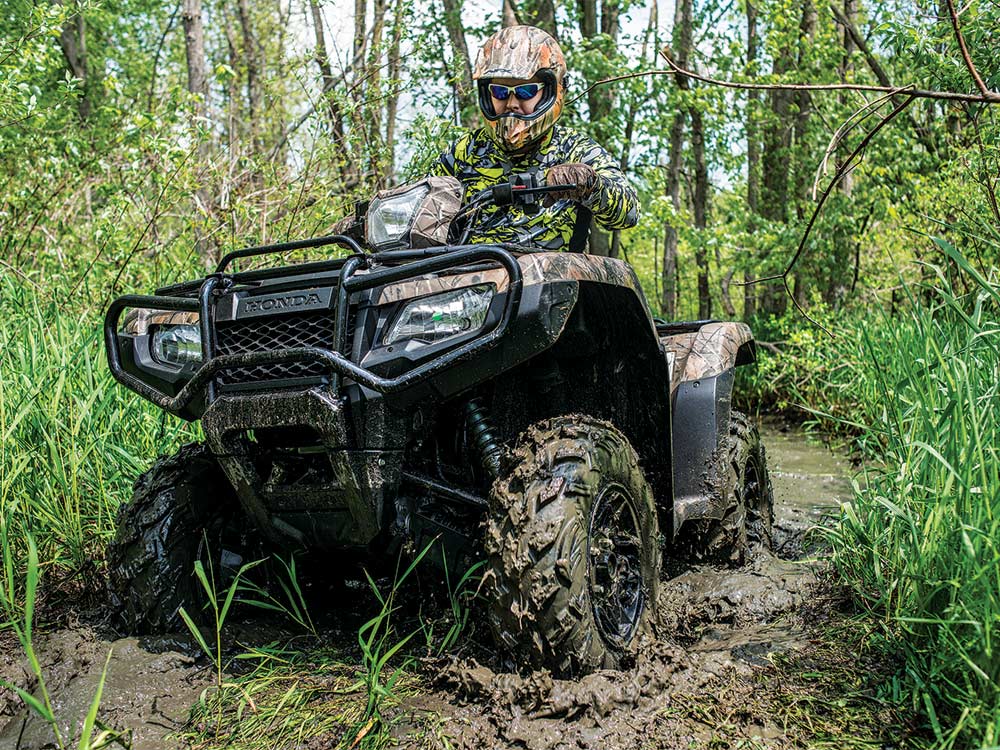
Cub Cadet Challenger 550 | Score: 62.5
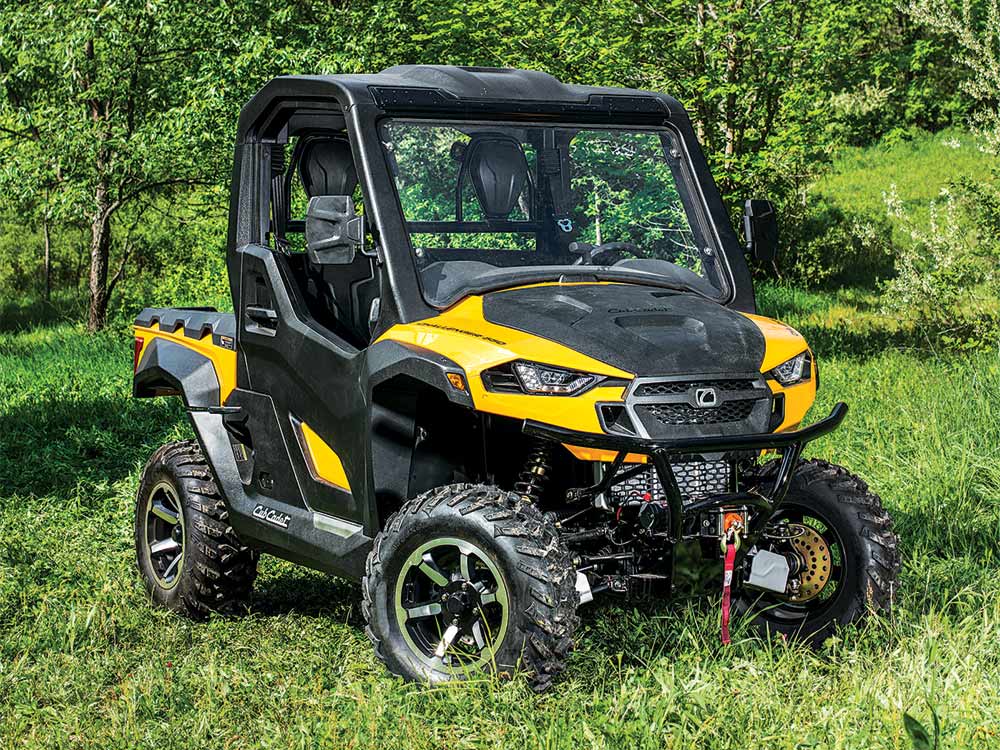
| The Results | |
|---|---|
| Handling | 6.3 |
| Build Quality | 6.0 |
| Versatility/Utility | 7.3 |
| Noise Level | 5.1 |
| Ground Clearanace | 9.2 |
| Serviceability | 7.7 |
| Top Speed Score | 5.0 |
| Ride | 4.3 |
| Value | 5.3 |
| Ease of Use | 6.0 |
| TOTAL | 62.5 |
Top Speed (MPH): 41
MSRP As Tested: $9,999
The Challenger 550 features the same robust standard accessory package and body size as its big brother, the 750. Unfortunately, it also shares the same issues of noise and vibration. This is a loud, rumbly machine that doesn’t handle especially well. That said, it’s not without its charms. The Challenger 550 includes a suite of accessories that cost extra on other units—a roof, a windshield, side doors, and a winch.
On the course, it held its own in terms of power and utility, but it couldn’t keep pace in ride, comfort, and handling.
ATV or UTV? An Internal Debate
I have this love/hate relationship with Craigslist.
I love that it offers up a plethora of used (and sometimes new) goods with a few strokes of the keyboard.
And I hate that it offers up a plethora of used (and sometimes new) goods with a few strokes of the keyboard.
I wasn’t really in the market for another ATV. Then I saw my buddy’s new Kawasaki Mule UTV and, suddenly, I wanted one. Well, I think I do anyway. Or maybe I don’t.
Here’s the situation: I have an early 2000s Honda Rancher 350 ES. I got the machine for a steal through a Craigslist ad (where else?) and it has been much more than I expected.
I have no idea how I got things done before owning an ATV.
It’s made checking trail cameras much quicker and less intrusive, hanging treestands is much less of a chore.
I’ve hauled out many winters’ worth of firewood with it, and plowed way more snow from my driveway than I care to remember.
It is a tool in every sense of the word. That said, it has its limitations.
For starters, carrying a passenger is not the easiest of tasks and, technically, frowned upon by the folks who wrote those annoying safety manuals. Having my wife on the seat behind me? Kind of fun.
Having my buddy Freeman sitting behind me with his arms wrapped around my waist? Kind of weird.
A side-by-side UTV offers the very real advantage of an extra seat (or more depending on model).
Hauling wood has also proven to be somewhat problematic. My ATV has a hitch and I have an old sheet-metal trailer that I’ve fitted with higher sides to increase is payload capacity. The ATV hauls it just fine but years of bouncing along have taken their toll. My little trailer that could probably can’t for much longer.
Contrast that to a UTV which includes a dump bed. I can haul a lot more firewood in my ugly mini-trailer, true enough. But the UTV’s bed will do the job more effectively and with less hassle.
In fact, there are many instances in which I’ve cursed the limited storage capacity of my ATV. Hauling treestand and climbing sticks being one of those times. I have a drop-basket rack and it does help. But it’s simply not big enough.
The UTV’s bed can carry more and is deep enough to prevent things from bouncing out all the time.
But. . . the UTV simply can’t fit into the tight spaces my ATV can. When trying to navigate through a woodlot that’s a very real consideration. Here’s another consideration: Trailer size.
I have a 4-foot by 8-foot utility trailer that does an excellent job of toting my ATV around wherever I need it to go. If I get a UTV, I’ll also need a bigger trailer.
Of course, that bigger trailer is required because the UTV is a bigger vehicle – which is part of the attraction of the machine.
So, yeah, I’m torn.
Even more so by this one final factor: Price.
UTVs cost more than ATVs. Yes, I’m sure there are exceptions but, for the most part, you’ll pay more for a brand new UTV than you will a new ATV. The same goes on the used market. Folks seem to love their UTVs because the inventory of used machines is pretty limited compared to the number of used ATVs available. And the prices are higher.
So, what to do?
Well, like most decisions worth making, I plan to think on it a bit more. To weigh all the pros and cons.
And, in the meantime, I best stop looking at Craigslist.

